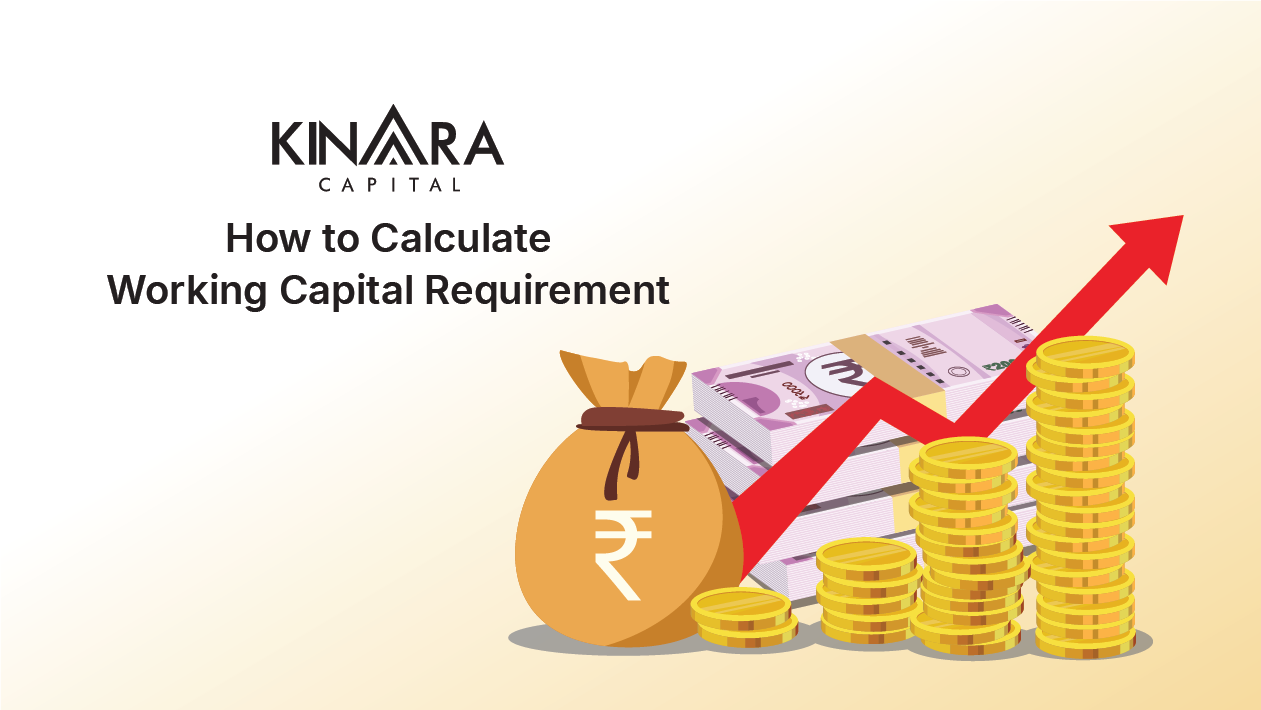
Cash flow and working capital are two crucial metrics that enterprises need to have a hold on to ensure survival. If you are unable to gauge your working capital requirement, it can get exceedingly hard to manage daily operations and make key investment decisions. It can also hamper your company’s revenue and growth prospects significantly.
Working capital or net working capital (NWC) is defined as the difference between an enterprise’s existing assets—including accounts receivable, finished goods, raw materials—and current liabilities like debts, accrued expenses and accounts payable.
Calculating the working capital is important as it provides business owners with a clear view of their company’s short term financial health. Positive working capital would demonstrate that your company can pay its employees, suppliers, debt interests, and other short-term obligations even if there is a cash crunch, whereas negative working capital is a red flag you need to address right away.
In this article, we tell you how you can calculate the working capital requirement for your business.
Before understanding how the working capital requirement is calculated, business owners should have a clear idea of what it entails before understanding how it is calculated. To understand how to calculate net working capital, subtract current liabilities from current assets. This calculation helps determine a business’s liquidity and ability to cover short-term obligations, ensuring smooth operations. Now, let’s look into a brief view of the various elements of working capital.
These comprise the liquid assets that can be converted to cash within 365 days. This would include:
The current liabilities include all liabilities that are due within one year, such as:
Working capital is crucial for a company’s day-to-day operations, but it has its limitations. Accurate working capital calculation can be challenging due to fluctuating sales, seasonal variations, and unpredictable expenses. Mismanagement or poor working capital management can lead to insufficient funds to cover short-term liabilities, affecting the company’s ability to operate smoothly. A company’s working capital is a useful indicator of its overall financial health since it shows how well it can manage its activities, pay off short-term loans, and maintain financial stability.
The working capital requirement of your business is affected by a variety of factors like:
Enterprises are usually capable of meeting their short-term obligations with the revenue generated from sales. However, a company with a longer operating cycle would require more working capital to meet the costs incurred during the time.
Some enterprises require a relatively higher amount of working capital to survive in the market. For example, retailers, wholesalers, and manufacturers must maintain a large amount of physical inventory, which necessitates more working capital.
A small business looking for a way to expand its operations would require more working capital than an MSME wanting to operate at the same level. Management goals play a major role in determining your enterprise’s working capital requirement.
Here is a quick look at the steps involved in calculating the working capital of your enterprise:
Step 1: Calculate all the current assets (CA)
Step 2: Calculate all the current liabilities (CL)
Step 3: Apply the following formula: Working capital = CA – CL
Managing the short-term obligations plays a major role in the long-term success of your enterprise. If you see that your business has negative working capital, it is time for you to take proactive steps to ensure liquidity as early as possible.
Taking a working capital loan can be your best option in such a situation. We at Kinara Capital can help with the quick disbursement of collateral-free working capital loans to ensure that your business stays afloat even during the most challenging times. Our online loan application process is seamless, flexible and requires minimal documentation.
So, take complete control of your working capital with Kinara’s support and witness the exponential growth of your enterprise.
Understanding and managing working capital is crucial for the smooth operation and success of your business. Accurate calculation helps meet daily needs and make informed decisions, with positive working capital indicating financial health and negative working capital signaling potential issues. Effective management involves assessing current assets and liabilities, while considering factors like operating cycles, business type, and goals. Kinara Capital offers quick, collateral-free working capital loans to help businesses maintain liquidity and stability, ensuring they can thrive even during challenging times.
1. What does a positive working capital indicate?
A positive working capital means that a company has more current assets than current liabilities. This indicates the company can easily cover its short-term obligations and has a good liquidity position.
2. What does a negative working capital indicate?
Negative working capital means that a company has more current liabilities than current assets. This suggests that the company might struggle to pay its short-term debts and face liquidity issues.
3. How can working capital be improved?
Working capital can be improved by increasing sales, reducing overhead costs, speeding up receivables, or extending payables. Efficient inventory management and better credit terms with suppliers also help.
4. What are some common pitfalls to avoid when calculating working capital?
Common pitfalls include not accounting for all current assets and liabilities, using outdated financial data, and overlooking seasonal fluctuations that can affect working capital.
5. How often should working capital be calculated?
Working capital should be calculated regularly, ideally monthly or quarterly, to monitor the company’s short-term financial health and make timely adjustments as needed.
6. How can working capital be used to evaluate a company’s financial health?
A company’s working capital is a useful indicator of its overall financial health since it shows how well it can manage its activities, pay off short-term loans, and maintain financial stability.
